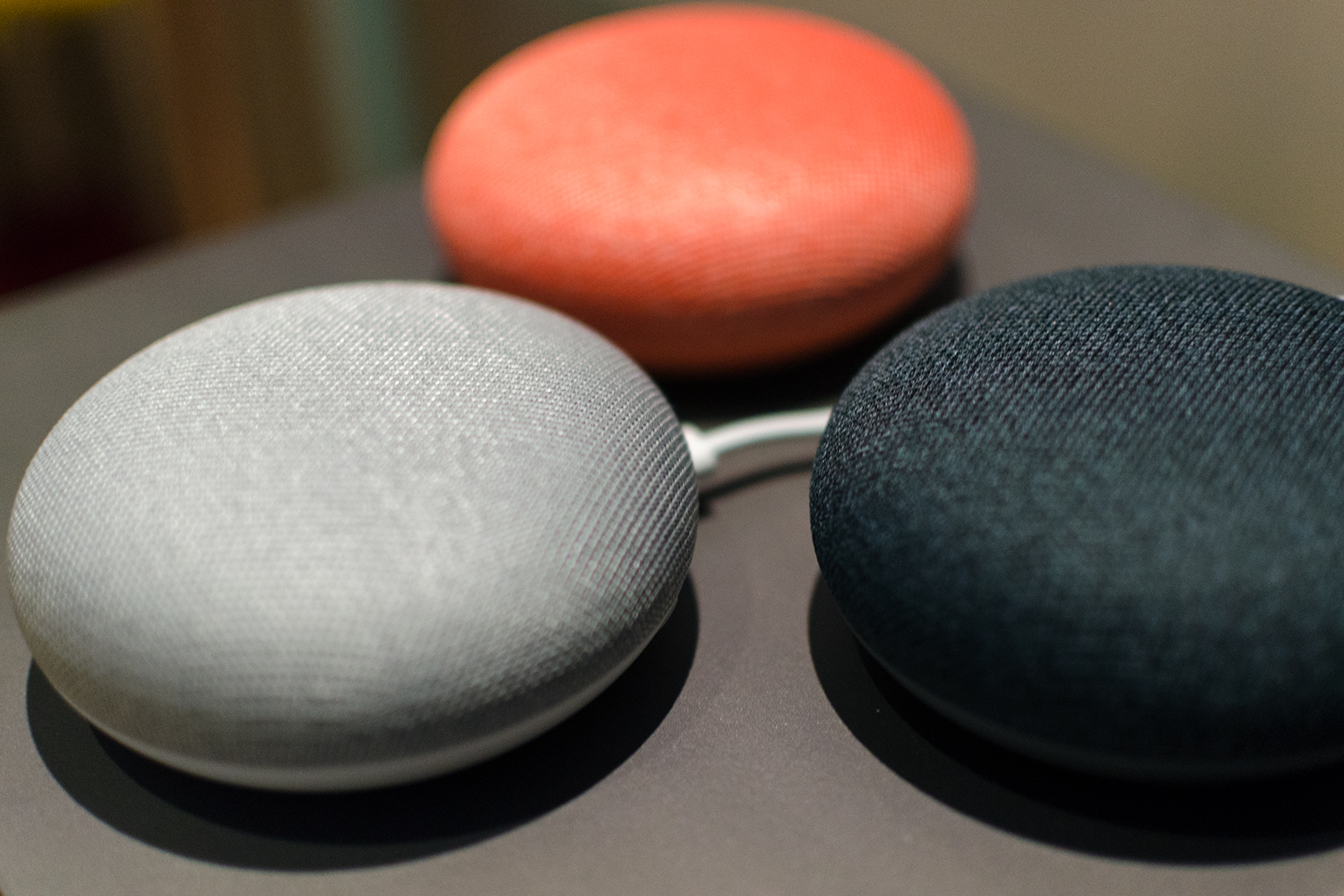Smart speakers are powerful. They’re a great way to control your smart home. You use them to tell you the weather, set reminders, make phone calls, and so much more. Households are filled with many people, which can lead to many smart speakers littered throughout the home. Google Home speakers, in fact, can be paired together to form stereo sound systems.
As you introduce more and more speakers, however, using them can become a little confusing, especially in situations where two are in the same room. Fortunately, there are things you can do to help mitigate some of the confusion.
Smart speakers can have terrible hearing
One of the most common problems multi-speaker home users run into is having the wrong speaker activate. You may have run into the problem already, when you speak a command toward one speaker, but the response comes from another one – perhaps even in an adjacent room!
There are a few ways you can try to mitigate this. Smart speakers have multiple far-field microphones built into them to try and determine where the voice that is speaking to them is coming from. Deliberately turning and speaking directly to the speaker you want is the best way to ensure the correct speaker hears you.

Acoustics can play havoc with this far-field listening, however. Another adjustment you can make is to simply move the speakers so they’re more isolated from each other. In a multi-room house, moving the speakers to locations that place walls between each speaker is best. Of course, you might have to play with this a bit depending on the acoustics of your home. A good general rule of thumb is to place a speaker in a room by itself, away from the door. Keeping smart speakers out of corners and away from clutter is also a good idea.
Google also lets users set “Hey, Google” sensitivity on various speakers, which can be useful if there’s one speaker that’s used more often than others. Open your Home App and tap the speaker you need to adjust. Then tap the Settings cog > Hey Google Sensitivity. You can adjust the sensitivity anywhere between -2 and +2, making the speaker more or less sensitive. In my house, we have every speaker set to -2 except the one in our kitchen, which is usually where we ask for timers and the like.
Another option is adding all speakers to a single room in the Google Home app might help. Open the Google Home App and tap on each individual speaker, then tap on the Settings Cog > Room. This will allow you to change the rooms to which your Google speakers are assigned. It’s not ideal, and for sure it’s a last-ditch effort, but it can be effective.
Being able to ask Google any question anywhere in the house and getting personalized results is amazing.
Finally, if you have two speakers in the same room as a sound system (left and right channels, etc) you can simply mute the microphone on one of the speakers. That will allow the speaker to play music, and it should cut down on the confusion when setting timers, or asking for the weather. Obviously, this only works in this specific use case though.
Protecting your privacy
Another common problem that smart speaker users run into is privacy. Even if you live alone and you’re buying your first smart speaker, it’s important to make sure you put safeguards in place so your speakers don’t allow others to access your calendar, or order things on your behalf.
In the case of Google and Nest, that comes with Voice Match. Make sure to set up Voice Match by opening the Google Home app. Tap on your profile picture in the upper right corner. Then tap Assistant settings > Assistant > Voice Match. Here, you can train Google to recognize your voice, or if you’ve already done that, you can make sure all your speakers are matched to your voice.

Once your speakers recognize your voice, Google will respond only to you for requests that are relevant to you — like checking your calendar or setting reminders. Setting your entire family up with voice recognition makes Nest speakers much more useful for everyone, and keeps your data private at the same time. Voice match can access different individuals’ profiles, calendars, and even Spotify playlists, by using listening to each person’s unique voice.
Don’t rush the setup
Smart speakers can be a great convenience. Being able to ask Google any question anywhere in the house and getting personalized results is amazing. But to avoid any pitfalls, be prepared to go through a little bit of setup in advance and adjust on the fly. At the end of the day, you will undoubtedly find it worth all the trouble.
Want more news, reviews, guides, and features from Digital Trends? Follow us on Apple News, Google News, and Flipboard.
More on smart speakers
- Which should you buy: A smart speaker or smart display?
- Having a backyard bash? Your smart speaker could pose a security risk
- These words can accidentally activate a smart speaker
- Using a smart speaker to contact emergency services
- The case for putting a voice assistant in every device



